#Pseudopanax
Explore tagged Tumblr posts
Text
#2226 - Pseudopanax ferox - Toothed Lancewood

AKA fierce lancewood or horoeka.
And similar to the more common Pseudopanax crassifolius, that I covered for @purrdence's last visit, but with more prominently tooth-edged leaves. The juvenile leaves are narrow, a very dark grey-brown to grey-green colour, stiff and up to 40 cm long, and prominently toothed along the margins. This may have evolved to make them visibly and texturally unpalatable to Moa. After 10 to 15 years they transition to a much more normal-looking tree, now their foliage is out of reach to even the tallest giant flightless birds.

A mature toothed lancewood can be 6 metres tall with a trunk of 25 cm in diameter. The mature trunk has longitudinal grooves which sometimes twist slightly.
Increasingly popular as a small garden tree.
Other species of Pseudapanax are very different, as you'll see over coming weeks.
Craters of the Moon, Taupo Volcanic Zone, New Zealand
154 notes
·
View notes
Note
I see a bunch about the pukeko who are all over my back yard, but I'd love it if you posted some pics of the Takahe, their puppet headed bigger daddy. <3



Takahē (Porphyrio hochstetteri), family Rallidae, order Gruiformes, found in isolated areas of New Zealand
ENDANGERED.
photos: Pseudopanax (1,3), ZEALANDIA Ecosanctuary
356 notes
·
View notes
Text
Moth of the Week
North Island Lichen Moth
Declana atronivea
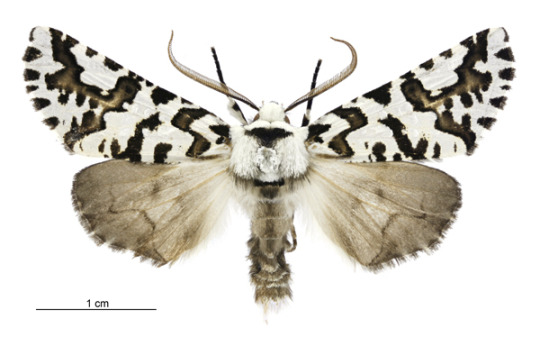
The North Island lichen moth or North Island zebra moth is in the family Geometridae. It was first described in 1865 by Frances Walker as Detunda atronivea, which was later changed to the Declana genus. It’s species name “atronivea” can be broken into the Latin words atro meaning black and nivea meaning snowy. Predictably, they are found in the North Island of New Zealand. Finally rounding out the name, the common name “zebra” comes from its black and white disruptive coloration and “lichen” comes from how this species camouflages itself by resting on lichen.
Description The forewings, head, and back are marked by a mottled white and black/dark brown pattern. It is very similar to the South Island lichen moth however, the North Island lichen moths’ wings are more mottled and present a rare form patterning in most: asymmetry. On its gray thorax is a black rectangular mark which also makes it differ from its neighbor. It’s hindwings and antennae are also gray with the hindwings having a gradient darkening towards the lower edge and a dark outline. The hindlegs follow the same gradient while the top two legs are black. Males have larger antennae while females have larger bodies.
Wingspan Range: 4 - 4.5 cm (≈1.6 - 1.8 in)
Diet and Habitat This species eats plants in the Araliaceae family, a family of flowering plants. Two examples of this are Five Finger (Neopanax arboreus) and Lacewood (Pseudopanax crassifolius). Adult moths do not feed.
This species is endemic to, or only found on, New Zealand. It is found exclusively in the North Island:
- Rare in Whanganui region (1913)
- Common around Mount Taranaki and Mount Ruapehu (1913)
- Also found in Wellington, Otaki and Napier
Mating Adults emerge from their cocoons in February and March and the eggs are laid singly in late October. Adult moths presumably mate near these timeframes. They begin green, transition to blue with purple spots in a week, and become a light purple before hatching. Hatching takes 11 days.
Predators This species avoids predation by camouflaging itself against lichen. The black and white pattern of its head, back, and forewings (which hide the hindwings while at rest) blend into the mottled surroundings. Additionally, the pattern creates an effect called disruptive colorations which breaks up the animals outline and makes them harder to spot. This works against potential predators such as birds.
Fun Fact Not only does the wing patterning vary on an individual North Island lichen moth’s forewings but even between moths of the same species.
(Source: Wikipedia, Entomological Society of New Zealand, Moth Identification)
#libraryofmoths#animals#bugs#facts#insects#moth#mothoftheweek#lepidoptera#Geometridae#north island lichen moth#north island zebra moth#Declana atronivea
51 notes
·
View notes
Text
Une abeille fossilisée vieille de 14,6 millions d’années découverte en Nouvelle-Zélande
See on Scoop.it - EntomoNews
Il s’agit du premier fossile d’abeille jamais découvert sur ces îles. Il offre une nouvelle pièce du puzzle sur l’histoire de ces insectes.
parBrice Louvet 20 février 2025, 17 h 32 min
"... L’abeille fossilisée découverte appartient au genre Leioproctus et a été baptisée Leioproctus (Otagocolletes) barrydonovani. Il s’agit d’une femelle mesurant environ 6,4 mm de long. Son état de conservation remarquable a permis aux chercheurs d’examiner en détail ses caractéristiques anatomiques, notamment les nervures de ses ailes qui présentent des similitudes avec certaines espèces actuelles du genre Leioproctus en Nouvelle-Zélande.
Une espèce énigmatique et une évolution encore floue
Si Leioproctus existe encore aujourd’hui en Nouvelle-Zélande avec dix-huit espèces endémiques, la découverte de ce fossile soulève des questions sur l’histoire évolutive de ce groupe. L’un des principaux mystères est l’absence d’une plus grande diversification de ces abeilles sur ces îles au fil du temps. En général, les espèces qui s’installent sur un territoire isolé comme la Nouvelle-Zélande tendent à évoluer et se diversifier rapidement.
Les scientifiques avancent l’hypothèse que Leioproctus pourrait être arrivé en Nouvelle-Zélande plus récemment qu’on ne le pensait. Si cette lignée d’abeilles était présente depuis 14,6 millions d’années, on s’attendrait à voir une plus grande variété d’espèces aujourd’hui. Il est également possible que des interactions écologiques, comme la compétition avec d’autres pollinisateurs ou des changements environnementaux, aient limité leur expansion. Les chercheurs suggèrent même que les différentes espèces de Leioproctus présentes actuellement en Nouvelle-Zélande pourraient provenir d’invasions successives à des périodes différentes plutôt que d’une seule lignée évolutive continue.
La Nouvelle-Zélande au Miocène : un monde disparu
Au moment où cette abeille vivait, le paysage de la Nouvelle-Zélande était bien différent de celui que l’on connaît aujourd’hui. Le site de Hindon Maar était en effet entouré de forêts mixtes de feuillus, et l’écosystème était composé d’une flore et d’une faune variées.
Si aucun pollen n’a été retrouvé sur le fossile, des graines et fleurs fossilisées qui appartiennent au genre Pseudopanax ont été mises au jour dans le même dépôt sédimentaire."
(...)
Image : Leioproctus barrydonovani. "Il n’existe aujourd’hui que 42 espèces d’abeilles en Nouvelle-Zélande."
Crédits : MS Engel & U. Kaulfuss
Bernadette Cassel's insight:
Sur le même sujet
A bee from the middle Miocene Hindon Maar of southern New Zealand (Hymenoptera, Colletidae) - De bioone.org - 18 février, 20:12
0 notes
Text
Garden for JC
A garden I designed and planted for a friend using entirely Aotearoa native perennials on one side of the steps, and mediterranean groundcover herbs on the other. Includes:
Veronica vernicosa / odora / buxifolia (Koromiko) Small grasses i.e. Carex comans / buchanii / flagellifera Libertia ixiodes / grandiflora (Mikoikoi) Acanea Purpurea / caesiiglauca (Piripiri) Leptinella 'Platts Black' Ophiopogon planiscapus Pittosporum / Lemonwood (Tarata) Pseudopanax crassofoliu / lancewood (Horoeka)


creeping Thymus and Rosemarinus species Salvia officinalus Origanum vulgare etc etc.


0 notes
Text



Pseudopanax lessonii, or houpara, is a New Zealand native tree belonging to the family Araliaceae. Coastal tree with fleshy hand-shaped leaves. Endemic. Three Kings to Poverty Bay and northern Taranaki.
17B Northcross Drive, Oteha, Auckland 0632
7PJC+QP9 Auckland
-36.7181000, 174.7218440
0 notes
Text



Plant of the Day
Friday 20 December 2019
The long, bronze evergreen leaves of Pseudopanax ferox (toothed lancewood) have a jagged edge which evolved to protect the plant from grazing animals. The narrow leaves radiate from a thin trunk in the juvenile phase while mature plants produce shorter, spreading, dark green leaves. This amazing New Zealand plant in the mature phase produces umbels of green-white, star-shaped flowers with black berries on the female plants.
Jill Raggett
#Pseudopanax#toothedlancewood#lancewood#evergreen#evergreentree#foliage#horticulture#hydehall#rhshydehall#gardens#garden#mhort#plant#wsd#writtledesign#hardy
51 notes
·
View notes
Photo




A juvenile lacewood (Pseudopanax crassifolius) in Nelson Lakes National Parks South Island NZ. It can stay like this for up to 20 years, then branches out and shortens its leaves, meanwhile loses the teeth on leaf margin as well. There are theories to explain this, one of them is to avoid to be eaten by moa, the prehistoric giant bird in NZ.
135 notes
·
View notes
Text

Ancient vegetation
The lancewood or horoeka (left) is a weird one. Its long, saw-like leaves point downward from a sharp central point for the first 30 or so years of its life. Then they turn upward, like these ones, and gradually become shorter and rounder over some years, until the plant comes to look much more ordinary. And as for the cabbage tree (right), it’s really a giant lily.
25 notes
·
View notes
Text
The Great ACT-NSW-NZ Trip, 2023-2024 - St. Arnaud
After getting across Cook Strait without being shipwrecked (the weather was actually quite pleasant compared to some of the unholy gales that come through the gap, with the wind merely howling), we started our explorations of Te Waipounamu, the Island of Greenstone Waters. Pounamu is such a beautiful and useful stone that the Māori named the entire island after it.
Europeans called it South Island, or archaically New Munster. It covers 150,437 square kilometres, making it the world's 12th-largest island. We stopped at the Omaka Aviation Museum, which was worth it, but our first night was spent at St. Arnaud, formerly Rotoiti, a tiny alpine village.
It's certainly surrounded by mountains, and shows some really nice alpine geomorphology - hanging valleys left where subsiduary glaciers got cut off by the larger glaciers in the main valley, scree slopes where the greywacke of the mountains is disintigrating, and alpine lakes like Lake Rotoiti itself, formed when the glaciers retreated at the end of the last Ice Age and left behind huge piles of pebbles, gravel, and boulders to dam the meltwater.



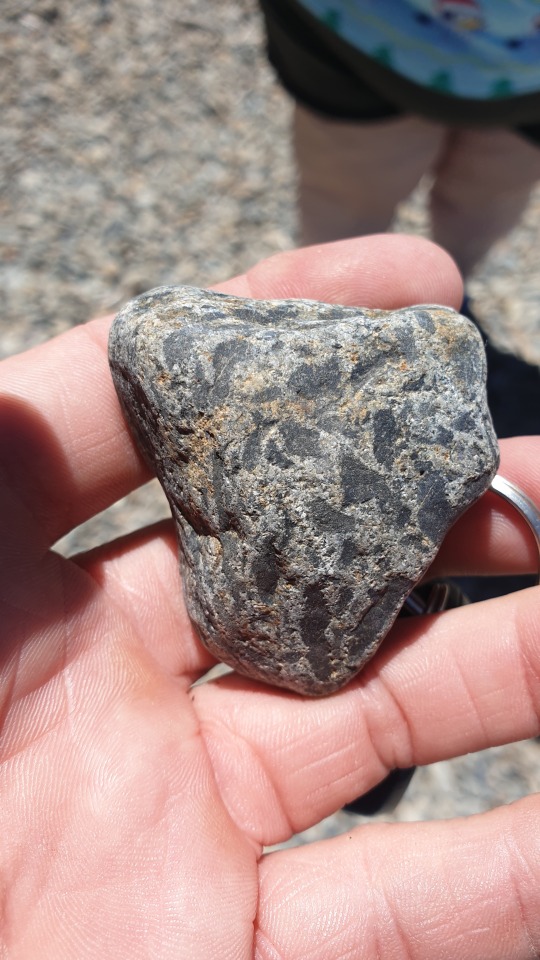

On the other hand St. Arnaud has also been built right on top of a considerably larger geological feature - the Alpine Fault. This tectonic boundary between the Australian and Pacific Plates runs for over 600km, and is one of the fastest moving faultlines in the world, moving, on average, almost 40mm a year. Geological formations that originally straddled the fault are now 480km apart. Unfortunately most of that movement happens during huge earthquakes every few hundred years - the last big one on the Alpine Fault happens around 1717, rupturing 400km of the fault at once.
Over the last 12 million years a significant upwards element to the fault movement has been added, creating the Southern Alps. Most of what is now the South Island got pushed 20 kilometers up, whereupon New Zealand's weather promptly ground it 16 kilometers back down again. The assorted rubble forms the plains on the east and southern coast, or got swept north by prevailing currents on the west coast. Exposed basement rock on the South Island is mostly greywacke, or heavily metamorphised rocks such as schist from even deeper. That's where the greenstone originally formed.
Anyway, the next big quake will probably trash St. Arnaud completely, and cut every road across the mountains for months. Happily that didn't happen on this trip - @purrdence had enough problems with a cyclone cutting roads and trainlines last time.
The original forest around St. Arnaud is mostly Antarctic Beech (Nothofagus sp.) and forms the basis of a unique and seriously threatened ecosystem. I'll tell you all about that over the upcoming posts.
Here's some species I've covered before.
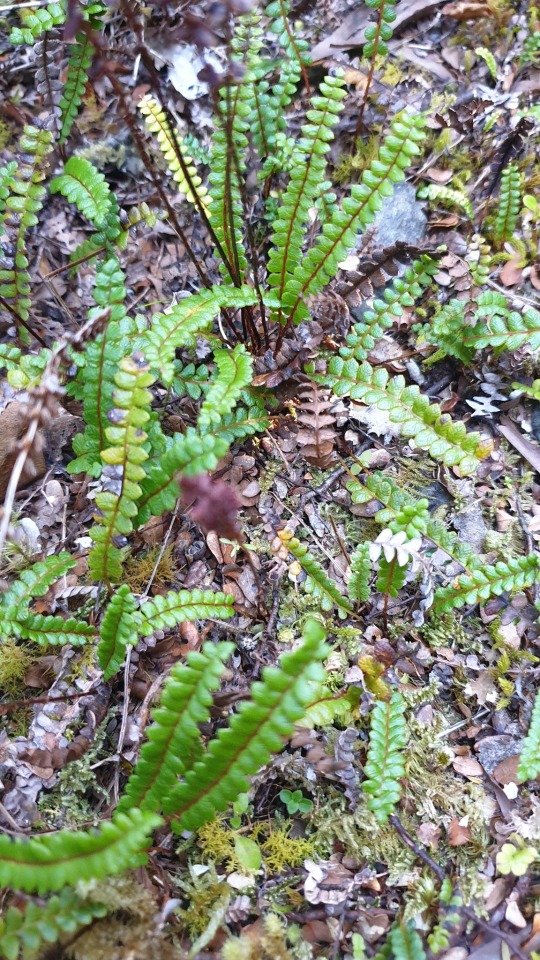
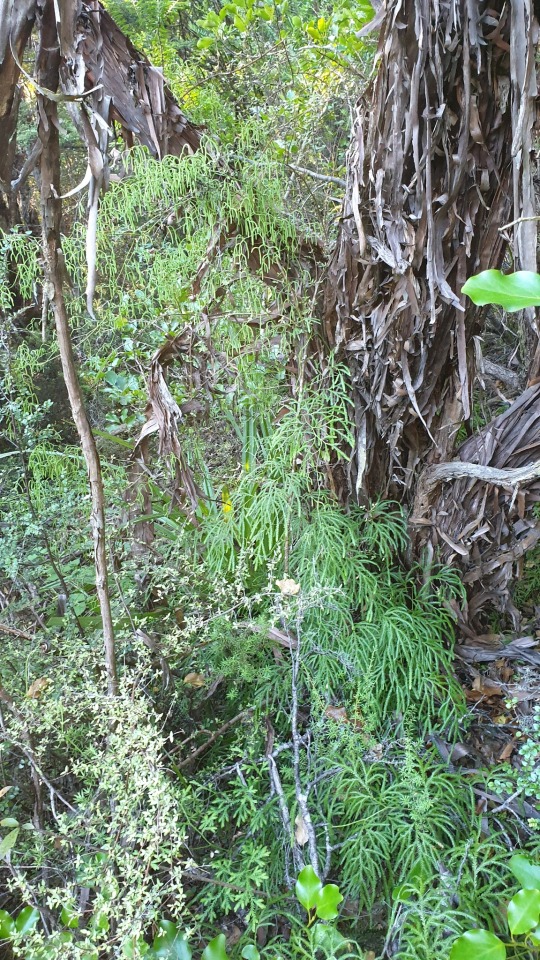
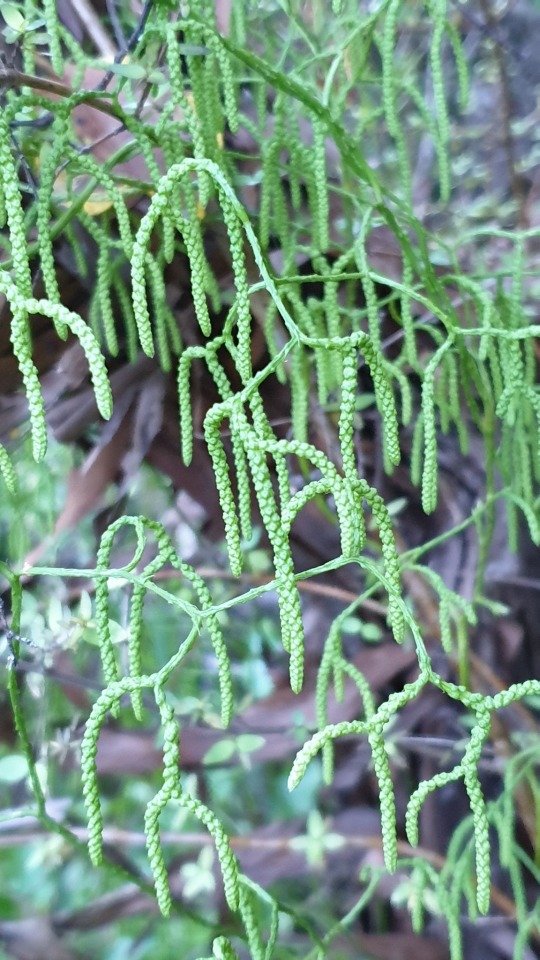



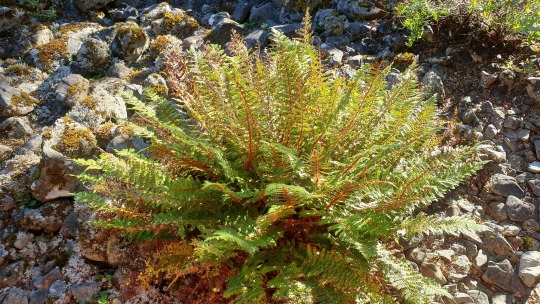


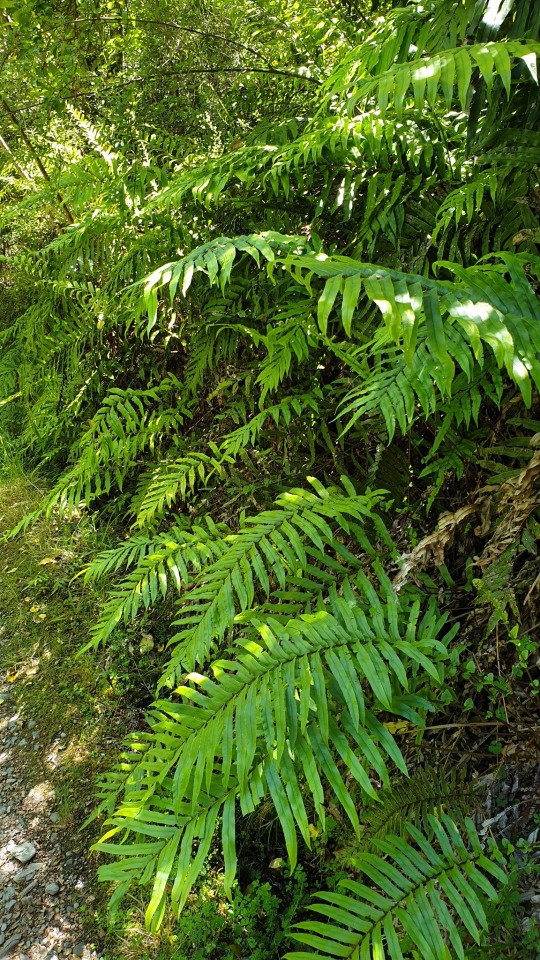
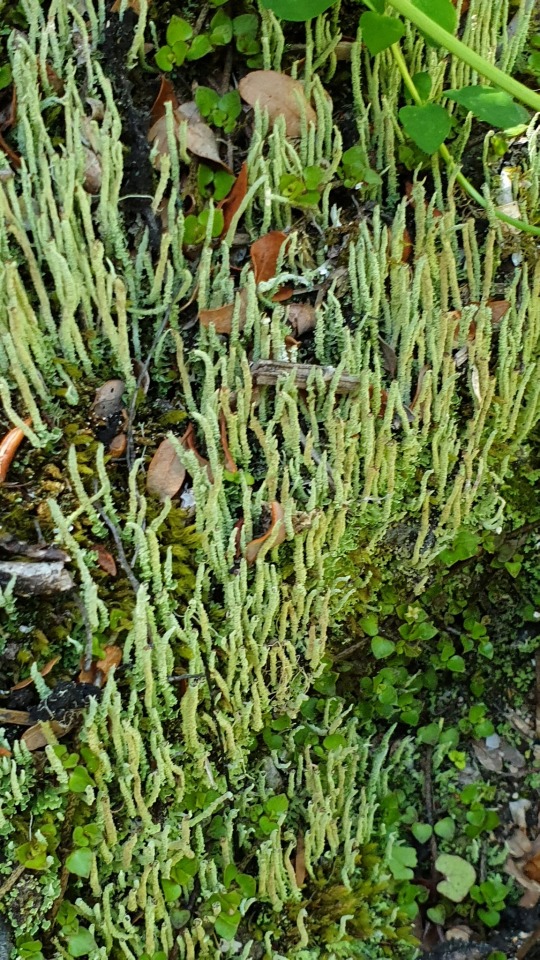
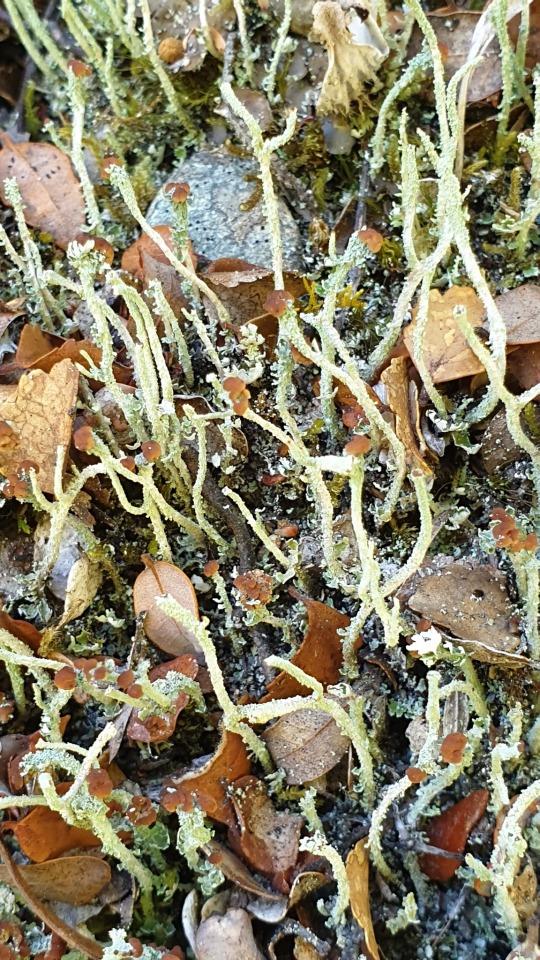

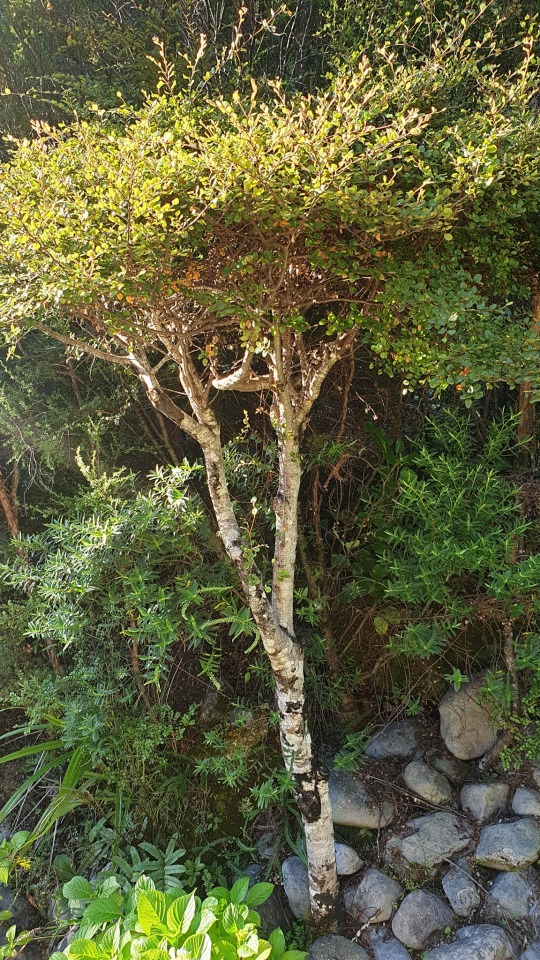










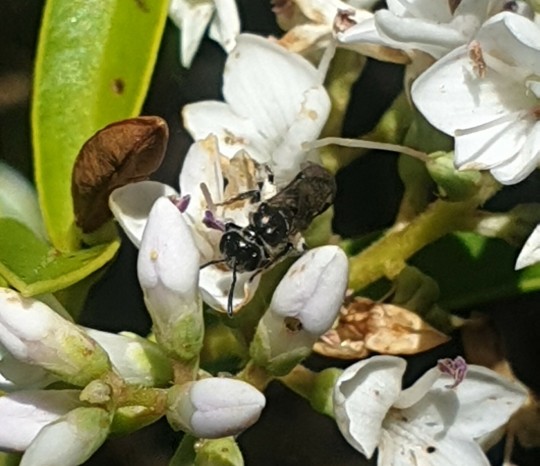
#st arnaud#new zealand geology#southern alps#alpine fault#alpine geomorphology#pseudopanax#araliaceae#new zealand plant#wahlenbergia#campanulaceae#blechnum#blechnaceae#nothofagus#antarctic beech#nothofagaceae#lycopodium#clubmoss#lycopodiaceae#discaria#matagouri#rhamnaceae#usnea#beard lichen#parmeliaceae#lancewood#Campylopus#new zealand moss#moss#star-moss#leucobryaceae
3 notes
·
View notes
Text
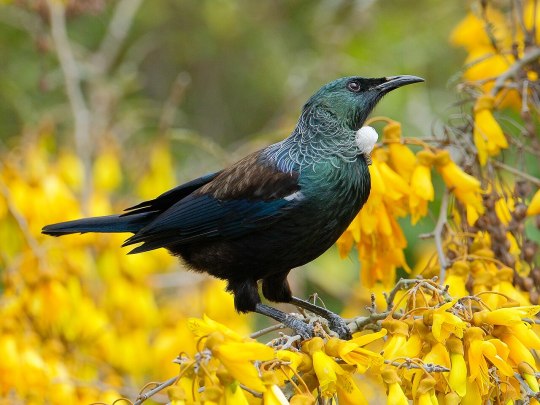
Tūī (Prosthemadera novaeseelandiae), perched on blooming kōwhai, family Meliphagidae, New Zealand
photograph by Pseudopanax
332 notes
·
View notes
Photo

Marian Maguire, 1962-
Pseudopanax Achilles Penthesilea, 2001, etching, 53.5x64 cm
Auckland Art Gallery Toi o Tāmaki, Inv. 2003/39/3
Achilles thrusts his spear into the throat of the Amazon Queen, Penthesilea. As they lock eyes, Achilles realises too late his love for her. The leaves of the New Zealand native Five Finger tree obscure the action, as if the viewer is watching the scene unfold from a position within the bush. (Auckland Art Gallery)
42 notes
·
View notes
Text
A bee from the middle Miocene Hindon Maar of southern New Zealand (Hymenoptera, Colletidae)
See on Scoop.it - EntomoNews
Une abeille du miocène moyen du Hindon Maar, sud de la Nouvelle-Zélande (Hymenoptera, Colletidae). La première abeille fossile de Zealandia est décrite et figurée à partir d'une excellente compression trouvée dans le gisement fossilifère du Miocène moyen du Hindon Maar au sud de la Nouvelle-Zélande. Leioproctus (Otagocolletes) barrydonovani n. sous-gen., n. sp. est représenté par une impression d'abeille presque complète en face dorsale. Le paléohabitat de L. barrydonovani n. sous-gen., n. sp. était une forêt mixte de Nothofagus/podocarpes/feuillus et l'espèce a peut-être visité des fleurs du genre araliacé Pseudopanax K. Koch, aujourd'hui commun dans toute la Nouvelle-Zélande. Le fossile est comparé avec ses congénères modernes de Nouvelle-Zélande.
0 notes
Photo

Unitec student work. A close up of the amazing coloration of the Pseudopanax ferox (lancewood) used in our “Reflections on a Black Landscape” show garden, which featured only three plant species held in gabion planters floating over a reflection pool and filled with coal and charred logs.
“Reflections on a Black Landscape” Ellerslie Flower Show. 2006.
5 notes
·
View notes
Text








Pseudopanax crassifolius × lessonii
Two of the species – Pseudopanax crassifolius, horoeka, lancewood, and Pseudopanax lessonii, houpara, coastal five-finger – hybridise wherever they occur together, be this in the wild or in cultivation.
Pannill Place, Oteha, Auckland 0632
7PGC+R25 Auckland
-36.7229780, 174.7201110
5 notes
·
View notes
Text
flora und fauna neuseeland (4)
Other inhabitants of rocky alpine sites are many species of the genus Hebe. The genus Hebe has its main focus of distribution in New Zealand and belongs to the family Scrophulariaceae. On rocky and stony sites all over the South Island, up to an altitude of 1600m, one can also find the "South Island Edelweiss" (Leucogenes grandiceps), whose leaves are small and woolly. The "North Island Edelweiss" Leucogenes leontopodium is often found in large quantities above 1250m and prefers stony locations.
Holidays and public holidays in New Zealand
In the Fjordland Marine Reserve are the world's largest, approx. One of the rarer small conspicuous trees of the lowland bush, which is also found on both islands, is the aralia plant Pseudopanax ferox (Toothed lancewood). The trunk seems to be composed of strands and the leaves of the young trees, which can be up to 50cm long, are covered with teeth. For the vegetation of the high mountains the geographical position is very important, it interacts with the local mountain climate and so a very special species composition develops in each high mountain range. The vegetation in the mountains changes according to the different altitude levels. |}{
>Coprosoma acerosa, which grows flat and almost cushion-like with many crossing branches and narrow small leaves, colonizing the sandy areas of all main islands.characteristic for New Zealand are the ferns, which are represented with about 150 species, of which about 150 are represented by the genus Celmisia. Besides the genus Celmisia, there are also a number of daisies, e.g.
{
{/ul> Read more about campervan hire New Zealand here. Also the introduced Possum (Fuchkusu), which was imported from Australia for fur breeding, spread rapidly. Meanwhile the New Zealand government is doing everything possible to get this plague under control and lays traps all over the country. This measure is used to estimate the population and to control the spread. It is not uncommon to find run over possums on New Zealand's roads, as every "Kiwi" considers it his duty as a driver to stop when possums cross the roads.
and South Seas
the Snow Marguerite (Dolichoglottis scorzoneroides), this too is a mighty plant over half a meter in size with fleshy leaves up to 20cm long. New Zealand has a high number of different vegetation zones. The climatic conditions range from subtropical in the north to cool temperate alpine in the south, accordingly different habitats can be found. Tree ferns with species of the genera Dicksonia and Cyathea and the Nik
1 note
·
View note